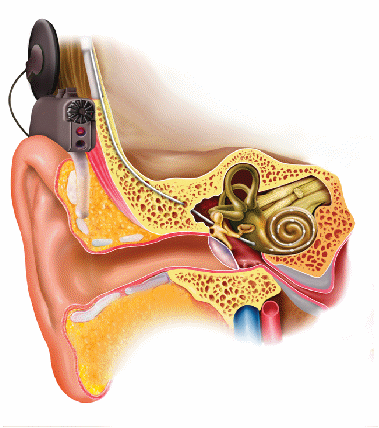Hearing aids attempt to correct for hearing loss. There are three nasic types of hearing aids:
-
Analogue aids. These are powered by a small battery. All anologue hearing aids contain a microphone that converts sound into an electrical signal. This signal can be filtered and amplified before arriving at a miniature loudspeaker. Some are equipped with a small coil to receive signals from a television or sound system. They are simple and cheap but their frequency range is limited and they cannot be made free from noise.
-
Digital hearing aids are basically analogue aids with digital processing. This makes it possible to improve the signal by noise reduction and amplification of the frequencies at which the voice is strongest. The digistal circuit introduces no noise, but this system is more complex and expensive.
-
Neither analogue or digital hearing aids are of any use to someone with profound sensory hearing loss. For these people, cochlear implants may help. These bypass the middle and outer ears using instead stimulation of electrodes implanted in the cochlea. This involves an operation to place the electrodes inside the cochlea. A microphone in a behind the ear hearing aid is connected to a box of electronics typically carried in a pocket. The electronics translates the microphone signal into a set of electrical signals which are sent to the electrodes implanted in the cochlea. The electrodes stimulate the nerves and the brain interprets the signals generated as sound. A cochlea implant is shown below.
